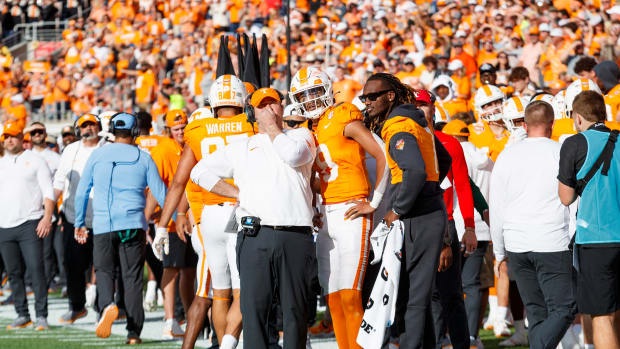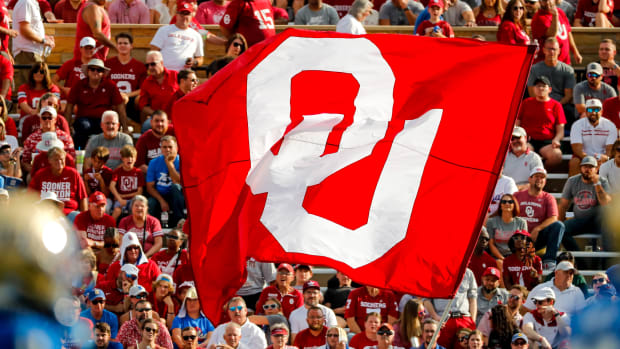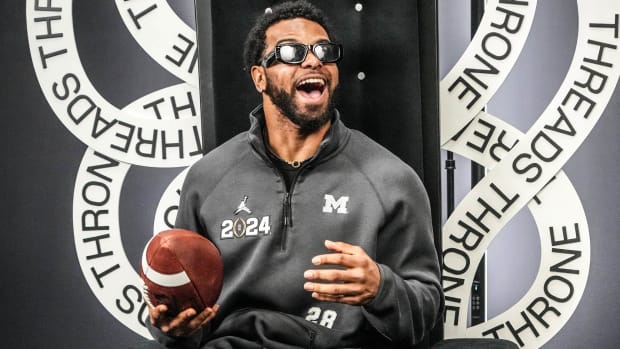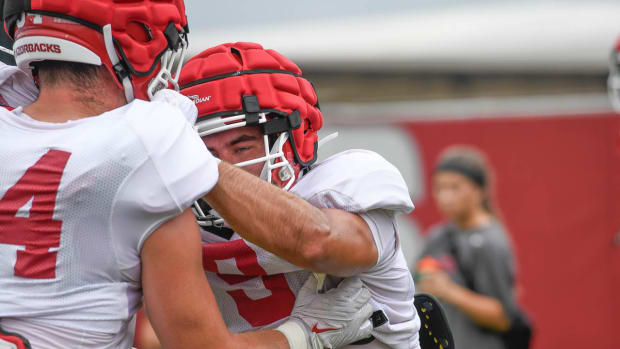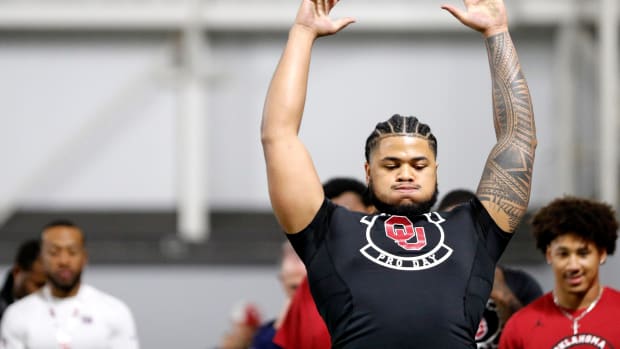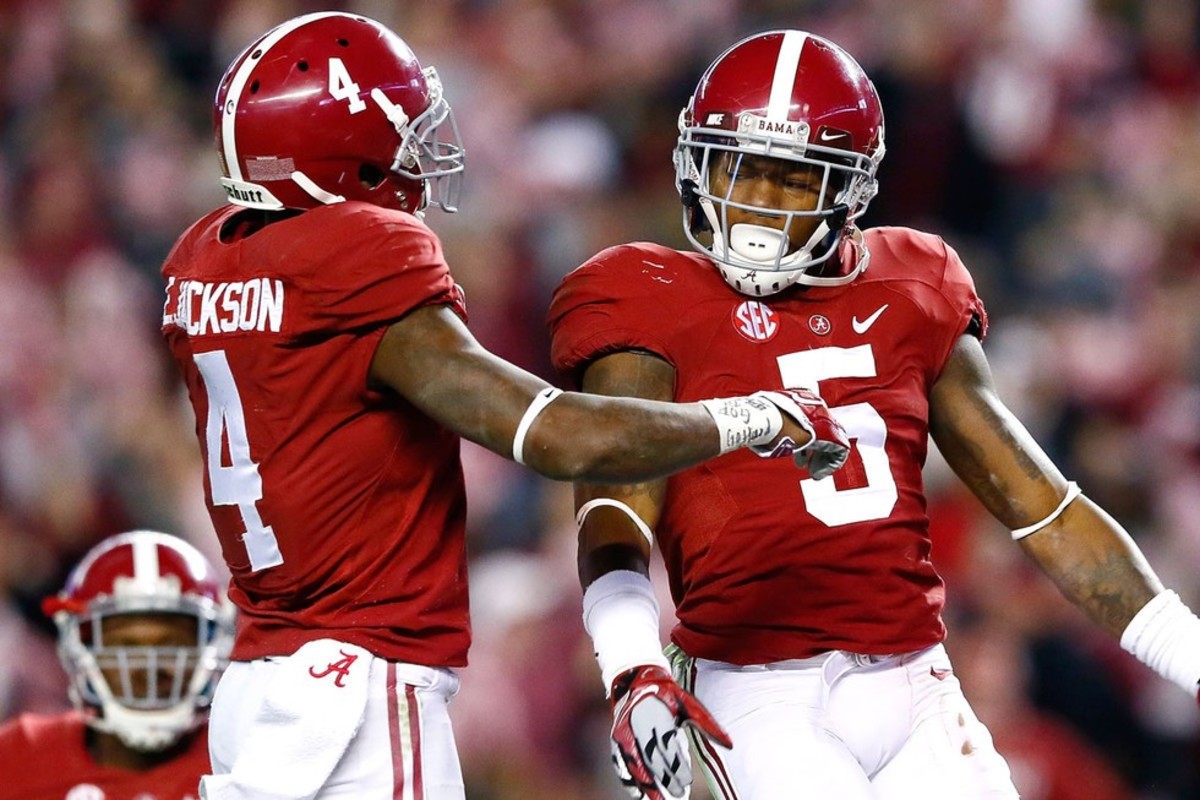
Alabama has won big by going small in the secondary, but will that approach keep working against Clemson?
TUSCALOOSA, Ala. — As LSU quarterback Brandon Harris awaited the snap, 244-pound tight end Colin Jeter moved from the right of the formation to the left. The Tigers now had two tight ends on the left side and a fullback ready to bash open a hole for sophomore tailback Leonard Fournette. Here, on LSU's first play from scrimmage at Alabama on. Nov. 7, the Crimson Tide's little secondary experiment would finally fail.
Alabama strong safety Eddie Jackson, all 194 pounds of him, had rolled into the box because the Tigers had packed the strong side of the formation. If one of the tight ends came to block him instead of trying to slip out into the flat, the play was likely to be a Fournette run. Jeter angled toward Jackson as soon as the ball was snapped. Because of the way LSU had overloaded the formation, Jackson now had to set the edge—a job usually reserved for defensive ends or linebackers—against a man with a 50-pound advantage. If Jeter could cave in the converted cornerback, Fournette would have a huge running lane.
Jackson didn't care. He lowered his shoulder and drove it into Jeter's midsection. This didn't stop the stronger man for long; Jeter drove his feet and began moving Jackson within a second. But Jackson's impact with Jeter came precisely as Fournette arrived behind Jeter. Jackson's brief push into the backfield forced the Tigers' back to bounce outside, where he was chopped down with a tackle at the legs by 196-pound free safety Geno Matias-Smith. Fournette gained only two yards on the carry.
[youtube:https://www.youtube.com/embed/mWvO7yY93sc?start=865]
The Crimson Tide's tiny safeties were supposed to be their weakness against power-running teams, but Jackson and Matias-Smith used that first play against the Tigers' offense—a play almost certainly designed to expose Jackson—to set the tone in Alabama's dominant 30–16 win, which knocked Fournette from the Heisman Trophy discussion after a 31-yard night.
The performance against LSU further reinforced the wisdom of Crimson Tide coach Nick Saban's and defensive coordinator Kirby Smart's decision to go small in the secondary. Matias-Smith, a senior, began his career as a cornerback, but moved to safety in 2013. Jackson, a junior, played cornerback in '13 and '14 before moving to safety during spring practice. Meanwhile, 195-pound freshman Minkah Fitzpatrick was recruited as a cornerback but has thrived in the Star position, a hybrid cornerback-safety role that Alabama uses when it wants a fifth defensive back. Against Clemson's spread offense in the College Football Playoff national title game on Monday, Bama will probably use five in the secondary for most of the game.
Last off-season, the Crimson Tide's coaches needed to do something to shore up a secondary that had finished 59th in the nation in passing yards allowed per game (226). In yards per attempt allowed, which accounts for the number of plays a defense has faced, the Tide were much better (No. 21 in the nation at 6.4 yards per attempt). Still, it was unacceptable at Alabama, where national defensive rankings are expected to be in single digits. "We were one of the weak links last year," Jackson said of the secondary.
For most of the Saban era, large strong safeties, who could thump tailbacks in run support, had patrolled the middle of the field. Mark Barron, who started for the Crimson Tide's 2009 and '11 national championship teams, weighed 218 pounds in college. Landon Collins, who started in '13 and '14, weighed 222 pounds during his time on campus. Alabama was big in the back, too; Robert Lester, who started at free safety from '10 to '12, weighed 210 pounds.
But with hurry-up, no-huddle spread teams like Ole Miss, Texas A&M, Tennessee and Auburn on their conference schedule every year, the Tide needed safeties who could cover speedy slot receivers. The concern was that Alabama would have to give up some bulk against the run, but Smart was willing to take that risk because he felt his defense's deep front seven would keep most opponents in check on the ground.
"What's Eddie's weakness? Maybe he's not as physical a run-stopper as Landon, but that's never been an issue for us—stopping the run," Smart said. "Our issue has been giving up explosive plays. He helps prevent that, because that's his strength."
Kevin C. Cox/Getty Images
As it turns out, Jackson, Matias-Smith and Fitzpatrick can tackle nearly as well as their heavier counterparts. Jackson proved himself several times in the LSU game by dragging down Fournette—who had embarrassed some much larger would-be tacklers earlier in the season—by himself for a loss or a minimal gain. "I think they've done pretty well," Saban said. "They haven't had to do as much this year because the front has done a really good job of stopping the run. But in the opportunities that we've needed them to fill the run, I think they've done a really good job."
Still, Saban knows that Clemson's offense will challenge his trio of safeties more than any team that the Crimson Tide have seen this season. The Tigers, because of the way they outnumber defenders in the run game, are excellent at getting running back Wayne Gallman (5.5 yards per carry) and quarterback Deshaun Watson (5.5) in one-on-one situations against tacklers from the secondary. Meanwhile, those safeties will also have to play the primary role Smart and Saban envisioned when they went small in the secondary. They will have to quickly diagnose Clemson's run-pass option plays—in which Watson can throw, keep the ball or hand it off with no change to the blocking scheme to tip off defenders—and tackle receivers in the open field. Tackle a receiver as soon as he catches a bubble screen, and the Tigers' offense is behind the chains. Miss that tackle, and the receiver is getting a first down and possibly a lot more.
"It'll be important in a game like this—as spread out as you are—that they do a good job not only in terms of stopping the run, but also the run-pass options [that the Tigers] run," Saban said of Alabama's defensive backs. "Whether it's bubble passes, smoke passes, screen passes, passes to the outside, everybody in the secondary is going to have to do a good job tackling."
If Bama's undersized safeties can bring those backs and receivers down by themselves, they could make a huge difference in the national title game.
[video:http://bcove.me/ldifxvyh]

